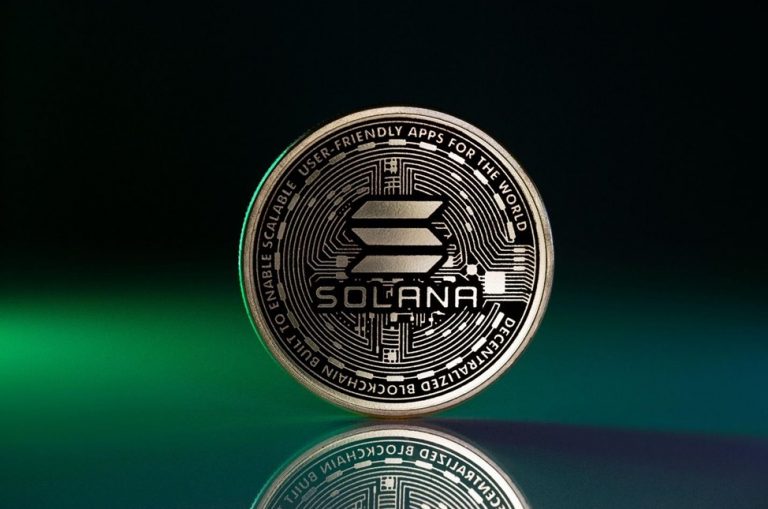
Nasdaq-listed Classover Holdings Inc. (NASDAQ: KIDZ), an educational technology company, has announced plans to raise up to $500 million through senior secured convertible notes to build a Solana (SOL)-based treasury reserve. The agreement, signed with Solana Growth Ventures LLC, requires Classover to allocate up to 80% of the net proceeds to purchasing SOL tokens.
An initial $11 million funding is expected soon, pending customary closing conditions. This move builds on a prior $400 million equity purchase agreement, bringing Classover’s total potential financing for SOL acquisitions to $900 million. The company has already purchased 6,472 SOL tokens for approximately $1.05 million and is exploring discounted locked token acquisitions. Following the announcement, Classover’s stock surged nearly 40%, closing at $3.72, though it faces operational challenges, including a 102% year-over-year revenue decline and liquidity issues.
Classover’s move to allocate up to $500 million for Solana (SOL) tokens signals growing corporate interest in cryptocurrencies as treasury assets, following the likes of MicroStrategy and Tesla with Bitcoin. This could legitimize Solana as a corporate investment, potentially boosting its market perception and price, given Solana’s focus on high-speed, low-cost blockchain transactions.
Register for Tekedia Mini-MBA edition 19 (Feb 9 – May 2, 2026): big discounts for early bird.
Tekedia AI in Business Masterclass opens registrations.
Join Tekedia Capital Syndicate and co-invest in great global startups.
Register for Tekedia AI Lab: From Technical Design to Deployment (next edition begins Jan 24 2026).
By committing 80% of the funds to SOL, Classover is heavily exposed to crypto market volatility. Solana’s price, while up 65% year-to-date to around $192, is subject to sharp fluctuations (e.g., a 30% drop in Q2 2024). This strategy could amplify financial risks, especially given Classover’s reported 102% revenue decline and liquidity concerns, potentially threatening its operational stability if SOL underperforms.
The 40% stock surge postannouncement reflects investor optimism about Classover’s crypto pivot, possibly driven by speculation on Solana’s growth. However, the stock’s low price ($3.72) and Classover’s operational struggles suggest this rally may be speculative, with risks of a correction if the strategy falters or market sentiment shifts. The investment could increase Solana’s adoption, particularly if Classover leverages Solana’s blockchain for educational technology applications (e.g., tokenized certifications or decentralized learning platforms).
Large-scale SOL purchases may also tighten supply, potentially driving price appreciation, though this depends on broader market dynamics. Allocating significant corporate funds to crypto could attract regulatory attention, especially in the U.S., where securities laws and accounting standards for digital assets remain unclear. Classover may face compliance challenges, particularly if SOL is deemed a security or if the SEC questions the fiduciary prudence of such a treasury strategy.
Supporters see this as a bold move to diversify Classover’s treasury and capitalize on Solana’s potential as a leading blockchain. Solana’s scalability (65,000 transactions per second) and growing ecosystem (e.g., DeFi, NFTs) make it an attractive bet for long-term value. The investment could inspire other small-cap companies to allocate treasury funds to crypto, strengthening Solana’s position relative to competitors like Ethereum or Cardano.
Speculative investors may view Classover as a proxy for SOL exposure, driving short-term stock gains. Critics argue Classover’s pivot is reckless, given its weak financials (102% revenue drop, $1.3 million quarterly loss). Betting heavily on a volatile asset like SOL could exacerbate liquidity issues, potentially leading to insolvency if crypto markets crash. Classover’s core business (edtech) has little apparent synergy with Solana, raising questions about strategic coherence.
Unlike MicroStrategy, which uses Bitcoin as a hedge against inflation, Classover’s rationale seems speculative rather than strategic. The stock surge may reflect hype rather than fundamentals, with risks of a sell-off if SOL underperforms or Classover fails to integrate blockchain meaningfully. The strategy highlights a broader divide in the investment community:
Crypto advocates view treasury allocations to digital assets as forward-thinking, while traditional investors see them as high-risk gambles, especially for struggling companies. The stock’s 40% jump suggests short-term speculative interest, but long-term success depends on Classover’s ability to stabilize its core business and justify its crypto bet with tangible blockchain integration.
Classover’s $500 million Solana investment is a high-stakes move that could either position it as a pioneer in corporate crypto adoption or exacerbate its financial woes. The divide between bullish crypto optimists and bearish traditionalists underscores the uncertainty, with outcomes hinging on Solana’s market performance, Classover’s operational recovery, and regulatory developments.



